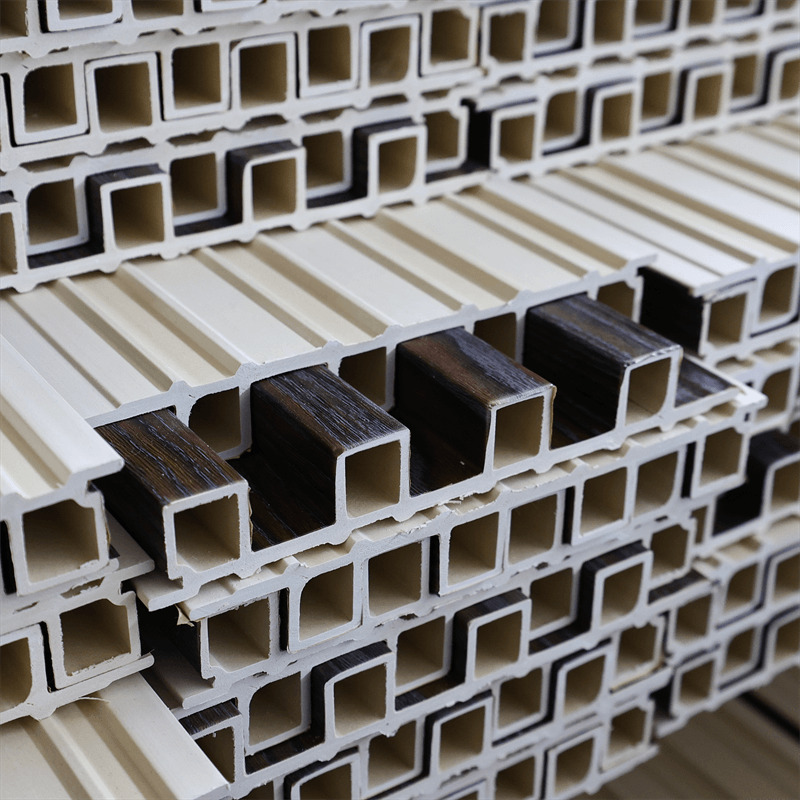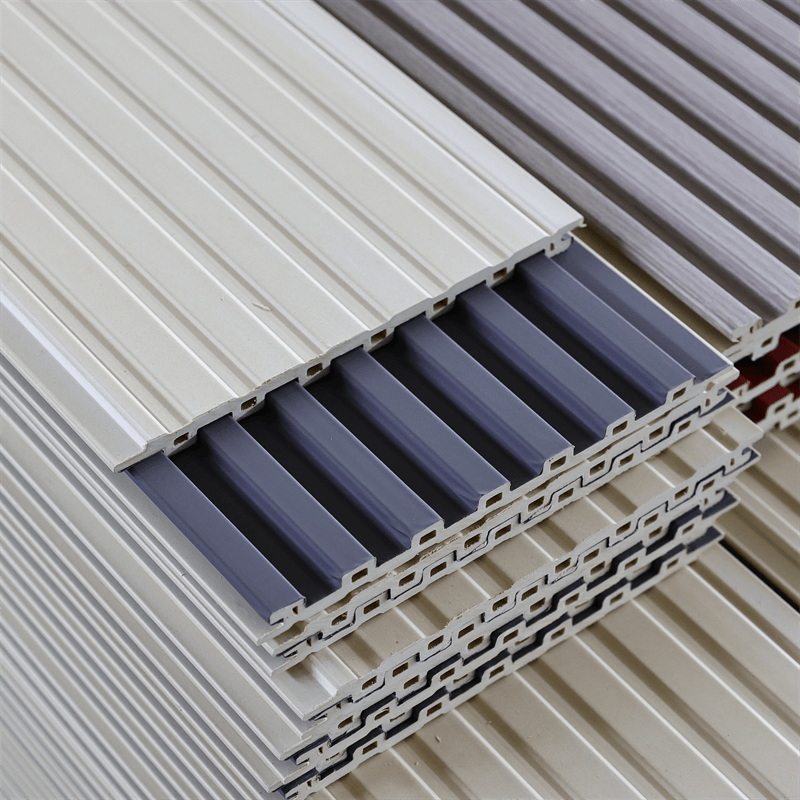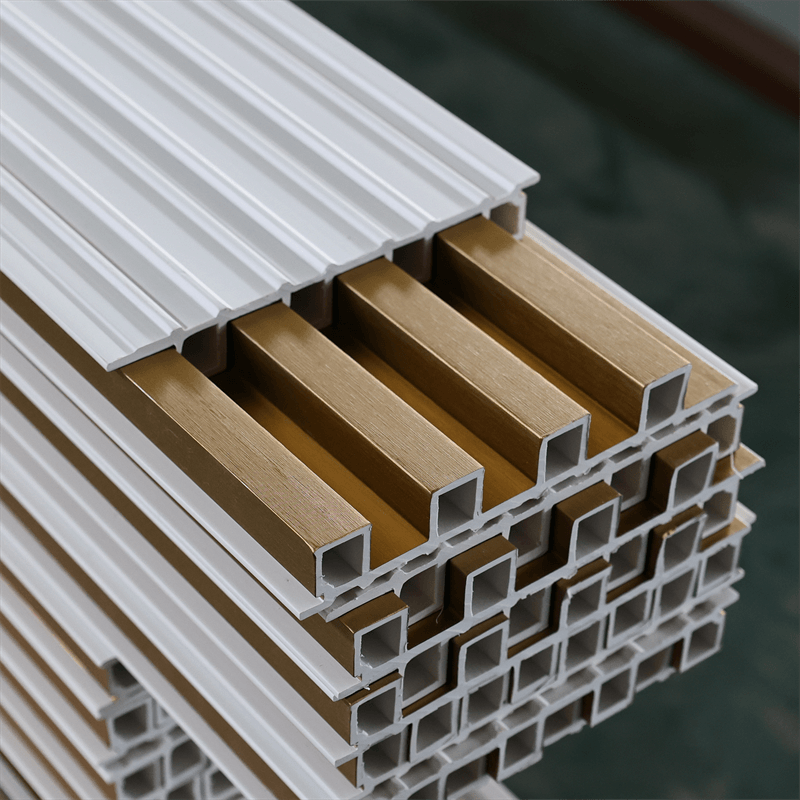The world of interior design is constantly evolving, with new materials and technologies redefining the possibilities for creating beautiful and functional spaces.
One such innovation is the introduction of WPC (Wood-Plastic Composite) panels as an alternative to traditional wall coverings.
This essay delves into the benefits of WPC panels, their versatility, durability, and sustainability, and how they are revolutionizing the way we think about interior design.

I. Understanding WPC Panels
- What are WPC Panels: WPC panels are composed of a combination of wood fibers and thermoplastics, resulting in a composite material that offers the best of both worlds – the natural look and feel of wood and the durability and versatility of plastic.
- Manufacturing Process: WPC panels are manufactured through a precise and controlled process that involves blending the wood fibers and thermoplastics, then molding and shaping them into panels of various sizes and dimensions.
II. Versatility of Design and Aesthetics
- Wide Range of Finishes: WPC panels are available in a diverse range of finishes, textures, and colors, providing designers and homeowners with endless design possibilities. Whether seeking a rustic, natural look or a sleek and modern aesthetic, WPC panels can be tailored to suit any design style.
- Customizable Patterns and Shapes: WPC panels can be easily cut, shaped, and molded to create unique patterns and designs, allowing for customization and personalized touches in interior spaces. From geometric patterns to intricate motifs, WPC panels offer versatility in design that goes beyond what traditional wall coverings can achieve.
III. Durability and Longevity
- High Resistance to Moisture: One of the significant advantages of WPC panels is their resistance to moisture. Unlike wood, which is prone to rot and decay in damp environments, WPC panels remain structurally intact, making them an ideal choice for areas such as bathrooms and kitchens.
- Enhanced Scratch and Impact Resistance: WPC panels are highly durable and resistant to scratches and impacts, making them suitable for high-traffic areas and spaces prone to accidental damage. Their robust nature ensures that they retain their original appearance and integrity even in demanding environments.
IV. Sustainability and Environmental Considerations
- Use of Recycled Materials: WPC panels often incorporate recycled materials, such as reclaimed wood fibers and recycled thermoplastics. By utilizing these materials, WPC panels contribute to reducing waste and minimizing the consumption of natural resources.
- Reduced Carbon Footprint: The manufacturing process of WPC panels requires less energy compared to the production of traditional wall coverings. Additionally, the long lifespan of WPC panels minimizes the need for frequent replacements, further reducing the overall carbon footprint associated with interior design.
- Low Maintenance and Easy to Clean: WPC panels require minimal maintenance, reducing the need for harsh chemicals and cleaning agents. Their smooth and non-porous surfaces make them easy to clean, promoting a healthier indoor environment.
WPC panels have revolutionized the concept of wall coverings, offering a range of benefits that go beyond what traditional materials can provide.
From their versatility in design and aesthetics to their durability, sustainability, and ease of maintenance, WPC panels are transforming interior spaces and challenging the norms of traditional wall coverings.
Designers and homeowners alike can embrace the limitless possibilities that WPC panels offer, from creating unique patterns and shapes to achieving a desired aesthetic that suits any style or preference.
The durability and resistance to moisture, scratches, and impacts make WPC panels an excellent choice for both residential and commercial spaces.
Furthermore, the use of WPC panels contributes to sustainable and environmentally conscious design practices.
By utilizing recycled materials and minimizing waste, WPC panels play a role in reducing the carbon footprint associated with interior design.
Their long lifespan and low maintenance requirements further promote sustainable living and reduce the impact on the environment.
In conclusion, WPC panels offer a new perspective on wall coverings, providing designers and homeowners with a versatile, durable, and sustainable solution for creating stunning and functional interior spaces.
As we continue to explore innovative materials and technologies, WPC panels stand out as a game-changer in the world of interior design, offering a combination of beauty, durability, and sustainability that goes beyond traditional wall coverings.

As we conclude our exploration of the benefits of WPC panels, it becomes evident that these innovative wall coverings offer a multitude of advantages that go beyond traditional materials.
With their versatility in design, ability to withstand moisture and impacts, and commitment to sustainability, WPC panels have become a preferred choice for interior designers and homeowners seeking functional and aesthetically pleasing spaces.
By embracing WPC panels, designers can unleash their creativity and bring unique patterns, shapes, and finishes to life, adding a touch of personalization and style to any interior.
The durability and resistance to moisture and scratches ensure that WPC panels maintain their pristine appearance even in high-traffic areas, providing long-lasting beauty without the need for frequent replacements or repairs.
Moreover, the sustainability aspect of WPC panels cannot be overlooked.
By incorporating recycled materials and reducing the carbon footprint associated with manufacturing and maintenance, these panels contribute to a greener and more environmentally conscious approach to interior design. Choosing WPC panels aligns with the growing demand for sustainable practices and helps create a healthier indoor environment.
In a world where innovation and sustainability are at the forefront of design, WPC panels emerge as a true game-changer.
They challenge the limitations of traditional wall coverings, offering an enticing blend of style, durability, and environmental responsibility.
Whether used in residential or commercial settings, WPC panels elevate interior spaces and provide a sense of modernity and sophistication.
As we move forward, it is essential to embrace the possibilities that WPC panels offer and recognize their potential to transform interior design.
By incorporating these panels, we can create spaces that reflect our unique style, withstand the test of time, and contribute to a more sustainable future.
In conclusion, WPC panels have broken the barriers of traditional wall coverings, offering a fresh and innovative approach to interior design.
With their versatility, durability, and sustainability, they have become a popular choice for designers and homeowners looking to create aesthetically pleasing and environmentally conscious spaces.
By embracing the benefits of WPC panels, we can redefine the way we think about wall coverings and unlock new possibilities for beautiful, functional, and sustainable interiors.

